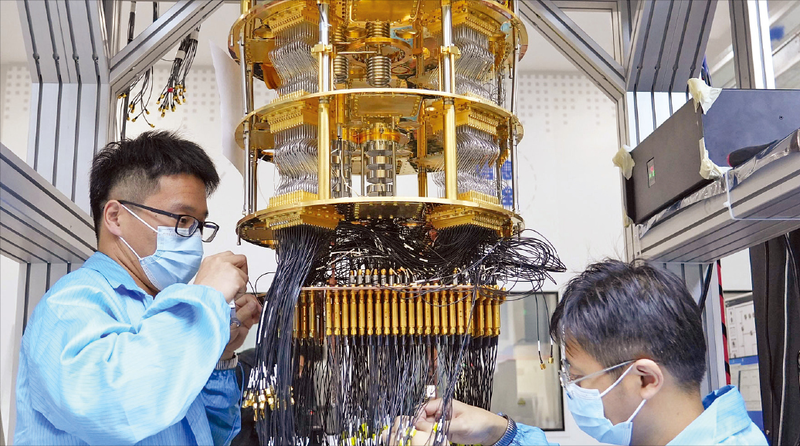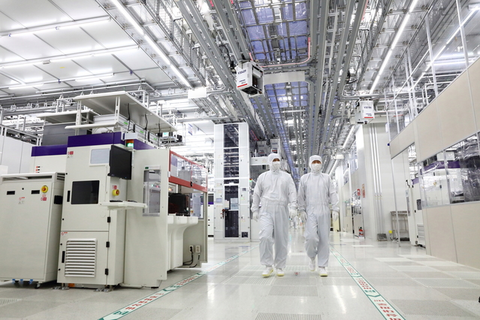China, Aiming for Global Quantum Supremacy, Unveils 1,000-Qubit Quantum Measurement and Control System
Input
Modified
"China Accelerates Quantum Computing Self-Reliance Aiming to Develop 10,000-Qubit Error-Corrected System Focused on Securing Future Quantum Advantage"

In the escalating race to define the future of technology, quantum computing has emerged as a transformative force with the potential to upend everything from cybersecurity to artificial intelligence. Amid this global pursuit, China has just taken a monumental step forward. By unveiling a self-developed quantum measurement and control system that supports over 1,000 qubits, Chinese researchers are not only narrowing the technological gap with their global competitors but are now being seen as setting the pace. This breakthrough, described by experts as the “central nervous system” of a quantum computer, signals that China’s quantum ambitions are no longer theoretical. Instead, they are fast materializing into a full-fledged industrial surge, one poised to redefine the future of global computing power.
QuantumCTek’s ez-Q Engine 2.0 Powers a New Era
The announcement came from the heart of Anhui Province, where the Quantum Computing Engineering Research Center confirmed that the Hefei-based startup QuantumCTek Co. had officially launched its ez-Q Engine 2.0. Building on the foundation laid by its predecessor, this upgraded system is now capable of operating the Zuchongzhi 3.0—a 105-qubit superconducting quantum processor that performs computations trillions of times faster than the most advanced supercomputers currently in use.
At the forefront of this development is Tang Shibiao, director of the research center and head of the QuantumCTek team. Tang revealed that the ez-Q Engine 2.0 achieves a tenfold increase in integration density over previous models, made possible by overcoming several technical challenges that have long hindered progress in this space. Among them were the complexities of direct RF-sampling and the need for large-scale clock synchronization. These hurdles were not only cleared, but cleared using domestically designed components, making the new system a milestone in China’s drive for technological self-sufficiency.
The results are impressive. The system has achieved significant noise reduction while boosting control precision and consistency—essential attributes for managing quantum processes at scale. Tang also stressed that ez-Q Engine 2.0 achieves this level of performance at less than half the cost of similar foreign systems, without compromising international technical standards. This cost efficiency, he argued, could fundamentally reshape the quantum technology market, where price and performance are often at odds.
The reliability of the system was put to the test on China’s record-setting 504-qubit superconducting quantum computer, where it demonstrated both exceptional precision and operational stability. According to Wang Zhehui, deputy director of the research center, this successful trial validates the system’s readiness for integration into even more complex platforms. The research team is now advancing toward the development of a control system for future machines equipped with up to 10,000 qubits and integrated quantum error correction.
Already, the ez-Q Engine 2.0 is being deployed at leading institutions such as the University of Science and Technology of China and China Telecom Quantum Group. The team envisions expanding its availability across more research and industrial facilities, ultimately supporting systems that can manage over 5,000 qubits. This strategic push marks a turning point in China’s quest to build scalable, fault-tolerant superconducting quantum computers that can rival or surpass anything being developed in the West.

Photonic Quantum Chips Break the Cryogenic Barrier
China’s dominance in quantum technology is not limited to superconducting systems. In a groundbreaking development from Peking University, researchers recently published findings in the journal Nature that unveiled a room-temperature photonic quantum chip capable of achieving large-scale quantum entanglement using light. This accomplishment, long considered a formidable challenge in the field, represents a profound shift in the quantum landscape—one that could bring the vision of a quantum internet within striking distance.
Unlike traditional quantum systems that rely on electronic circuits and cryogenic cooling, photonic quantum chips use photons to process information. These particles of light travel faster and produce less heat, making them naturally suited for high-speed, low-energy computation. What makes Peking University’s achievement particularly significant is its ability to operate at room temperature. This dramatically reduces the logistical and energy costs associated with maintaining extreme cold environments, thereby removing one of the biggest barriers to commercial quantum deployment.
The implications for telecommunications are immense. Conventional internet architecture, even as it evolves toward 6G and beyond, is based on sequential packet transmission—a method akin to reading a book one page at a time. In contrast, quantum internet based on entangled qubits would enable instantaneous, simultaneous communication, where all parts of a message are processed together like actors performing in perfect harmony on a stage. This not only enhances speed but also revolutionizes security, as entangled particles can detect interference, making hacking nearly impossible.
Experts believe the successful demonstration of large-scale quantum entanglement using photonic chips positions China far ahead of its global competitors. Western countries have struggled to achieve similar feats, especially outside of ultra-cold lab conditions. The fact that China has done so using light, and in a room-temperature setting, signals a potential inflection point for the global quantum industry.
The military and geopolitical ramifications of this are equally significant. Huawei, China’s leading telecommunications firm, is reportedly working in close partnership with top universities, including Peking University, to commercialize quantum internet capabilities. Under the leadership of Ren Zhengfei, a former member of the People’s Liberation Army, Huawei’s efforts underscore the strategic importance of quantum infrastructure in future warfare scenarios involving AI, drones, and autonomous technologies. Quantum internet is expected to serve as the backbone of these applications, further reinforcing China's motivation to lead the charge.
Zuchongzhi 3.0 and the Road to Quantum Advantage
The unveiling of Zuchongzhi 3.0 in March 2025 marked another milestone in China’s ascension as a quantum powerhouse. As the upgraded successor to Zuchongzhi 2.1, the new system introduced sweeping improvements across core performance metrics and is now integrated with QuantumCTek’s ez-Q Engine 2.0. Its debut in the pages of Physical Review Letters drew praise from peer reviewers, who lauded it as a benchmark-setting achievement in superconducting quantum computing and a clear advancement from earlier 66-qubit systems.
This development came at a time of heightened rivalry between China and the United States, both of which have taken turns unveiling major breakthroughs. In previous years, Google introduced Sycamore while China launched Jiuzhang, each signaling a temporary lead in quantum capabilities. But when China successfully developed Zuchongzhi 2.1, it became the first country to achieve quantum supremacy across both mainstream technological paths—optical and superconducting.
The international scientific community has long viewed quantum computing progress through a three-phase lens: achieving quantum advantage, building simulation systems with controllable qubits for solving real-world problems, and ultimately creating universal, programmable quantum computers capable of large-scale error correction and integration. China, according to many experts, is now firmly advancing into the second and third phases.
The Zuchongzhi 3.0 team is composed of some of China’s most distinguished physicists, including Pan Jianwei, Zhu Xiaobo, and Peng Chengzhi. Together, they are pushing boundaries in quantum error correction, entanglement, simulation, and quantum chemistry. Professor Zhu has revealed that the team is conducting surface code research with a current code distance of seven, with aspirations to extend it to nine and eleven. These enhancements will allow for even greater qubit integration and more refined control—key ingredients for building truly universal quantum machines.
The direction is clear. With continuous support from academia, industry, and the state, China is weaving together the components of a self-sustaining quantum ecosystem. It is an ecosystem designed not just to compete on the global stage but to lead it—technically, economically, and strategically. As breakthroughs like ez-Q Engine 2.0, photonic quantum chips, and Zuchongzhi 3.0 continue to emerge, the world may well be witnessing the consolidation of China’s position as a quantum superpower.





















